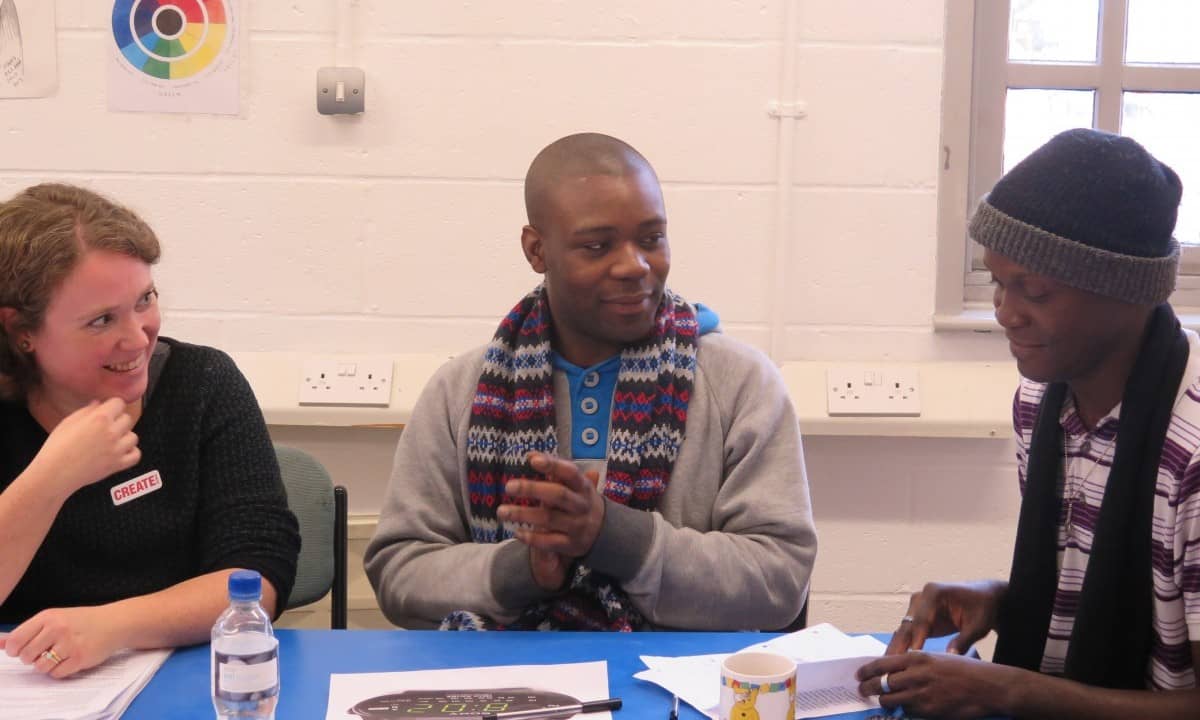
Throughout November and December 2016 our professional jewellery maker Hayley Kruger collaborated with young carers at Carers Support Merton and Sutton Carers Centre on Create’s inspired:arts programme.
With the school holidays approaching – a period that can mean increased responsibility for young carers – the children have been working with Hayley to design jewellery to gift to those they are close to over the festive period.
Hayley has been a jewellery designer for over 13 years, both for herself and for established brands within the fashion industry. In recent years her practice has returned to her roots, working on fine jewellery commissions alongside facilitating design workshops with Create:
“There have been so many wonderful moments working alongside young carers – and many other groups – and the Create team over the years. I’ve had loads of fun and the workshops have seen the creation of a real range of work: culturally-inspired body wear made to reflect the diverse identities within the participant groups; jewellery upcycled from used magazines, plastic bottles, fabric and drinking straws; stained glass-style decorations that hung in public at London’s Broadgate Circle … and those are just a few! There’s been so much wonderful jewellery made – earrings, bangles, necklaces, rings – that participants have either gifted to loved ones or kept as proud mementos of their creativity.
“Over the last month of workshops collaborating with the young people from Carers Support Merton, we’ve been designing pieces to be shared, making gifts for friends and family, as well as creating beaded Christmas decorations.
“It’s the young carers’ inventive themes that drive these projects forward. I recently read a quote stating that ’people who participate in the arts and crafts feel happier, calmer and more energetic’. It’s something that seems to ring true when you witness the creativity and interaction between these young people, all of whom share this common ground of caring.
“The workshops provide respite for both the young carers and their families from what can be quite pressurised domestic situations. By inspiring creativity within the young people, there is a sense of rejuvenated spirit. The sessions offer a break and a space for free time that can be restricted by responsibility.
“As a practitioner and artist on these young carer projects, I always learn. Working with participants is very different from my day-to-day work, which is usually quite an individualistic practice. Here, I learn so much about understanding other personalities and gain real insights into people’s backgrounds. I’ve also learned that patience is rewarding.
“The special moment for me is in seeing the difference in a participant’s confidence from the project’s beginning and at its end. It’s often those who at first might seem disinterested or may be a little disruptive that tend to come out of their shells the most. This transformation – witnessing the young carers sharing their work with the group and expressing interest in one another and their art – embodies exactly what this project sets out to do and why these workshops can be so beneficial for the young carers involved.”
This article is from 2016.



















